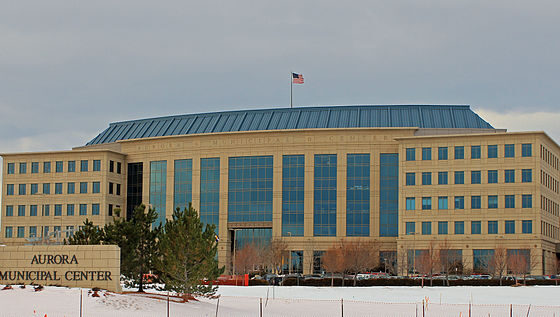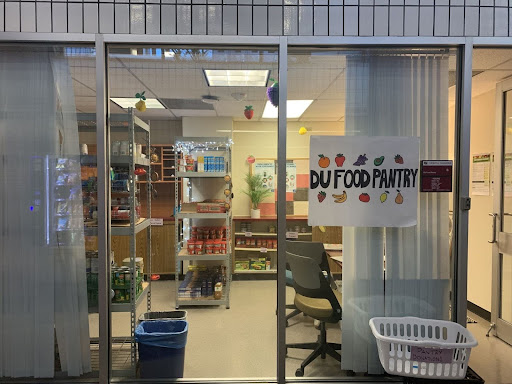Last week marked the 19th annual DU Diversity Summit. Over the course of three days, from Jan. 21 to Jan. 23, 22 events were held that discussed diversity and the theme for this year: How do we get to “WE?”
One of the events was entitled “Dismantling Power, Privilege and Popsicle Sticks.” Dr. Ally Garcia—DU alumnus and the Associate Director of Orientation, Transition and Retention at Metro State University (MSU)—and John Babcock—the Assistant Dean and Director of TRIO Student Support Services at MSU hosted. They began the event by outlining the three objectives for the hour and a half presentation: gain an understanding of the audiences’ own privilege, identify how the power that the audience members have is derived from those privileges and create action steps that will help dismantle the unequal power structure.
After affirming community norms, Babcock began discussing white supremacy. He asked the audience what they imagined when they heard that term. The audience said they imagined members of the Ku Klux Klan and their garb. Babcock nodded along and asserted that white supremacy is not just a radical, fringe idea, but a concept that underpins culture in the U.S.: the idea that white people, all of their practices and their entire identity is better than others’. He went on to say that white supremacy culture is a social and historical construct that justifies and binds together the U.S. and all systems within it. It is built into the system. Policies, property ownership, ideas around welfare and many more institutions bolster white supremacy.
Dr. Garcia transitioned and began talking about the academic underpinnings of Babcock’s assertions. Garcia described three of the five tenets of critical race theory, a theory of law that appreciates the nuances of race and articulated how such concepts contributed to white supremacy culture.
The first concept she described was “whiteness of property,” the idea that white people create policies and practices that leave out POC. The next tenet was “interest convergence.” White people benefit from policies and practices of POC, in some cases more than POC. Garcia gave the example of white women reaping incredible benefits from affirmative action, a policy intended to benefit POC. She also relied upon this concept to question DU’s intentions behind the Diversity Summit because DU, a predominantly white institution, benefits from appearing to care about diversity and inclusion.
The last tenet Garcia described was the concept of “color blindness, the neutrality of the law and equal opportunity for all.” This tenet asserts that white people are allowed to ignore racist policies and institutions under the false pretense that race is not a factor in societal inequities.
After establishing the conceptual underpinnings, Garcia and Babcock began talking about power and privilege. They said, “hierarchical structures based on white supremacy reinforce ‘who should’ and ‘who should not’ have power.” The cultural foundation of white supremacy means that white people have power and POC have less power if any at all.
Garcia asked the audience how they witnessed power being used at DU. One DU student talked about an example of power being used for good. He said that the @wecanDUbetter Instagram page was powerfully pressuring DU institutions to address sexual assault on campus. Others responded and talked about power dynamics between students, faculty and administrators. Garcia followed up and asked how privilege reinforces those power dynamics. One person answered that white people are thought to belong in places of power, and therefore more white people are in those places of power. Another person said that POC need to assimilate to have power in a society where white people do not need to assimilate because they are perceived to be the ideal type. Still, another said that white people could say radical things without concern that fragile white people would feel threatened.
Garcia and Babcock wrapped up the event with the activity that gave the event its namesake. Each audience member read an article about examples of white supremacist culture. An obsession with perfection and the written word, and disinterest in feelings and emotions are but a few of the many examples given. Audience members had a chance to discuss with others around them. Then, relying on the reading, each audience member got up and wrote down one way they contribute to white supremacist culture on a popsicle stick. Popsicle sticks were then assembled into a structure. The event ended with a few audience members walking up to the structure, reading a way they contribute to white supremacy and breaking their popsicle stick. Audience members committed to breaking down white supremacy by halting the ways they personally contribute to it.
Though the event ended on a positive note, the implicit conclusion was appropriately ominous. The popsicle stick structure was left mainly intact. It was a perfect representation of the daunting task of dismantling an entire society built on a racist foundation.
If you wish to read about white supremacist culture check out “The Cycle of Socialization” (Harro, 2004), “White Fragility” (DiAngleo, 2011), “White Privilege: Unpacking the Invisible Knapsack” (McIntosh, 1989) and “Home-Grown Racism: Colorado’s Historical Embrace-and Denial-of Equal Opportunity in Education” (Delgado & Stefancic, 1999).











